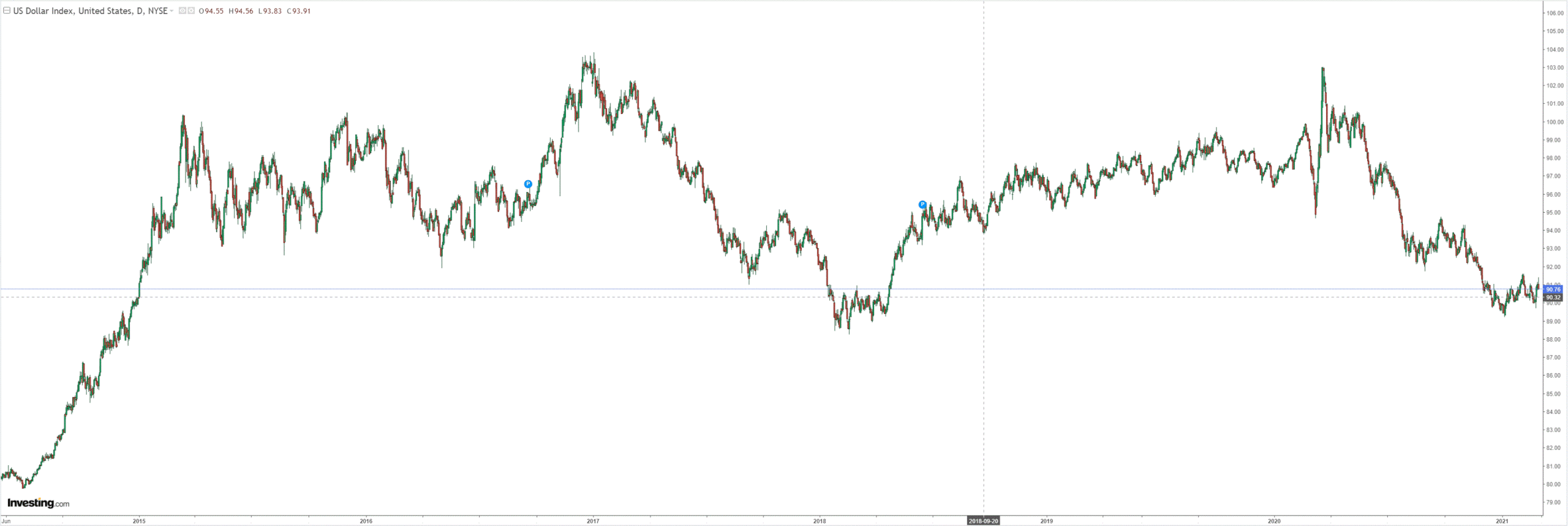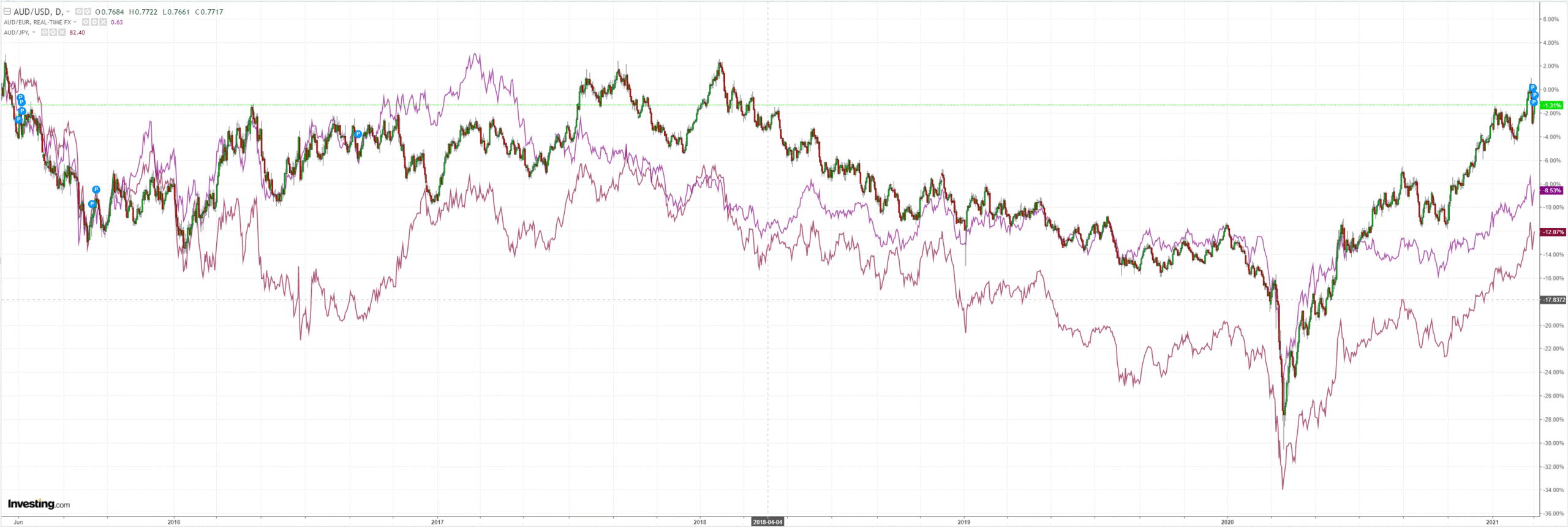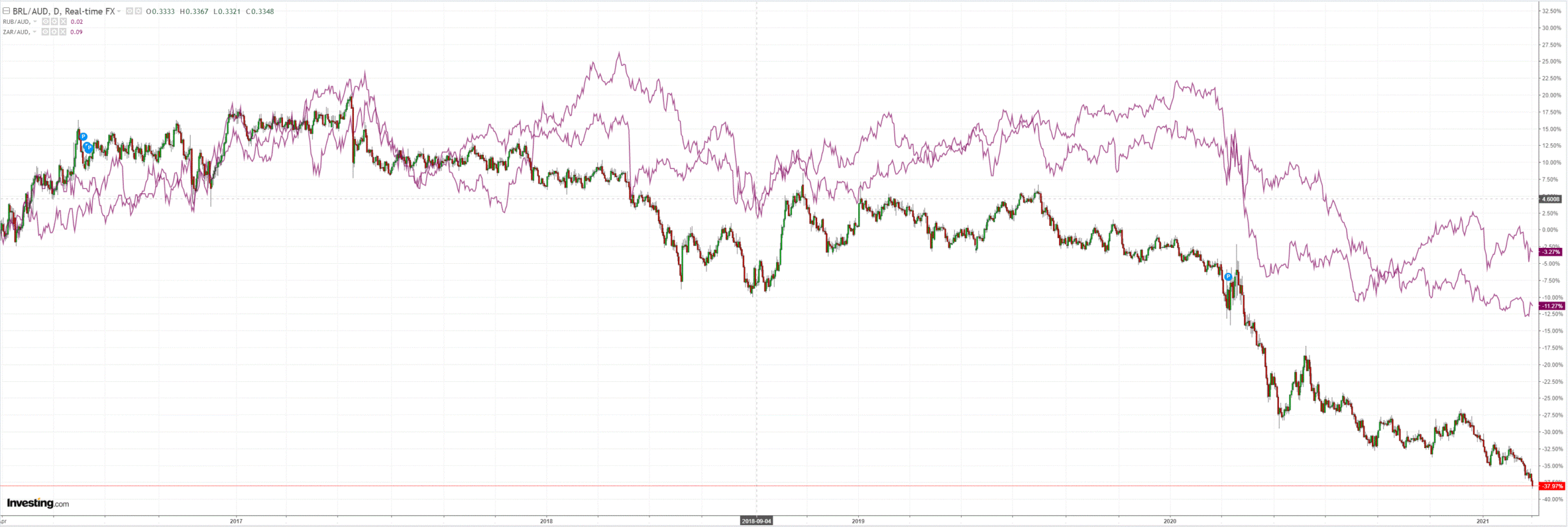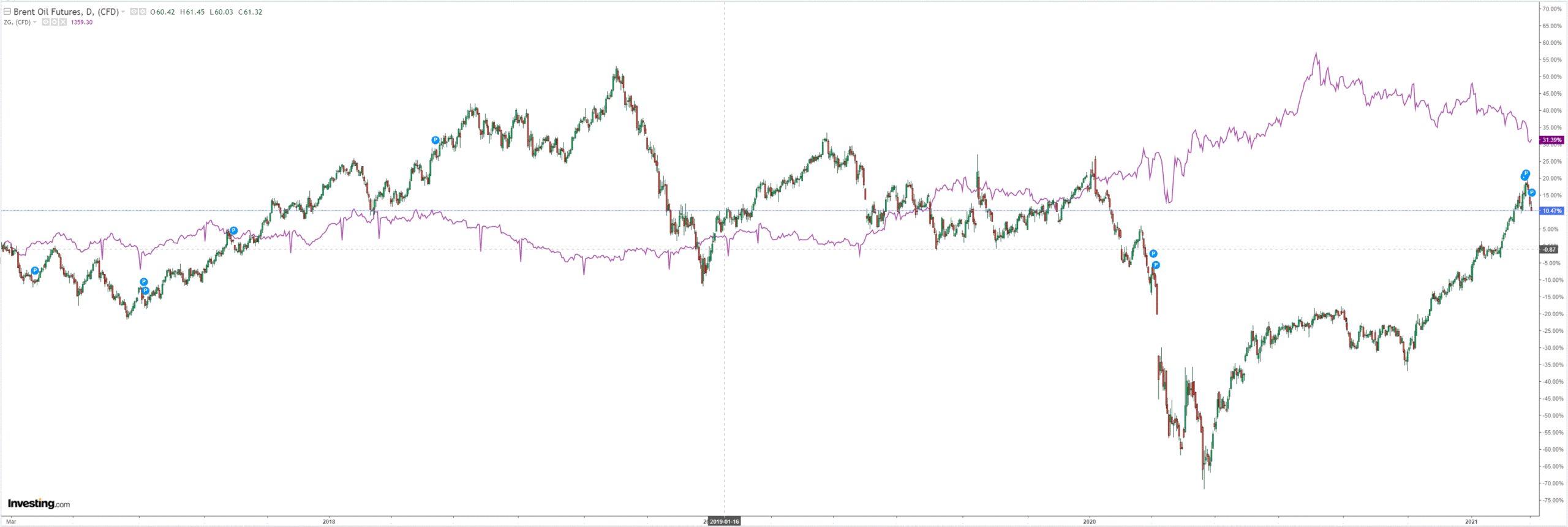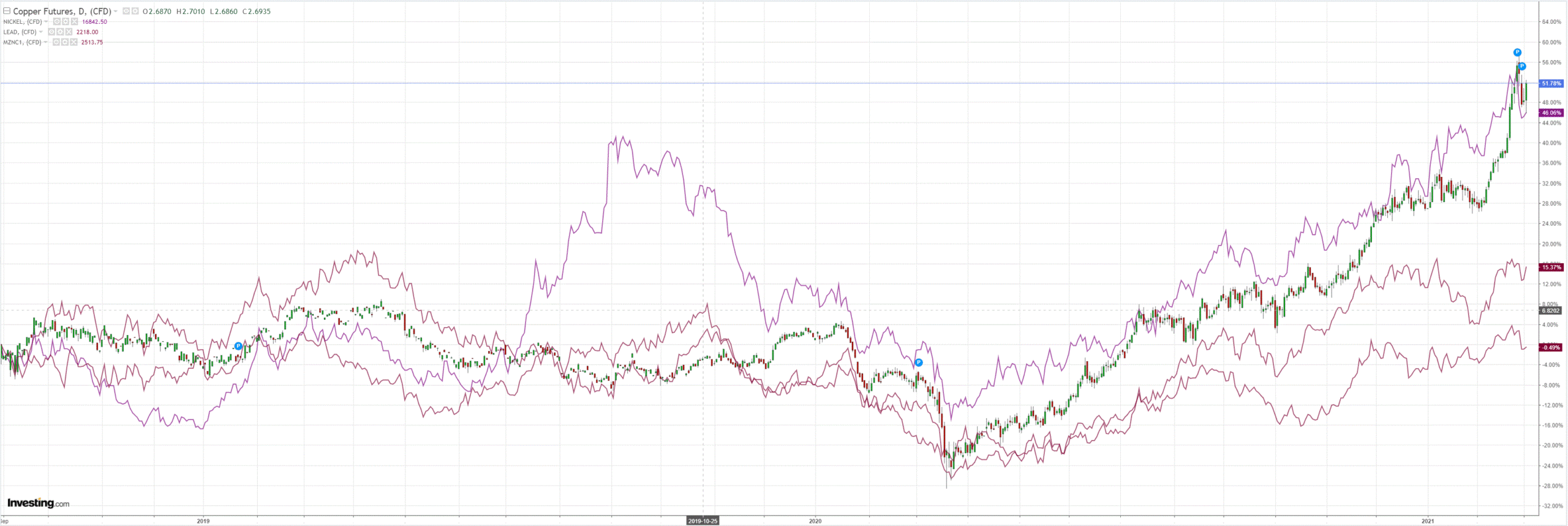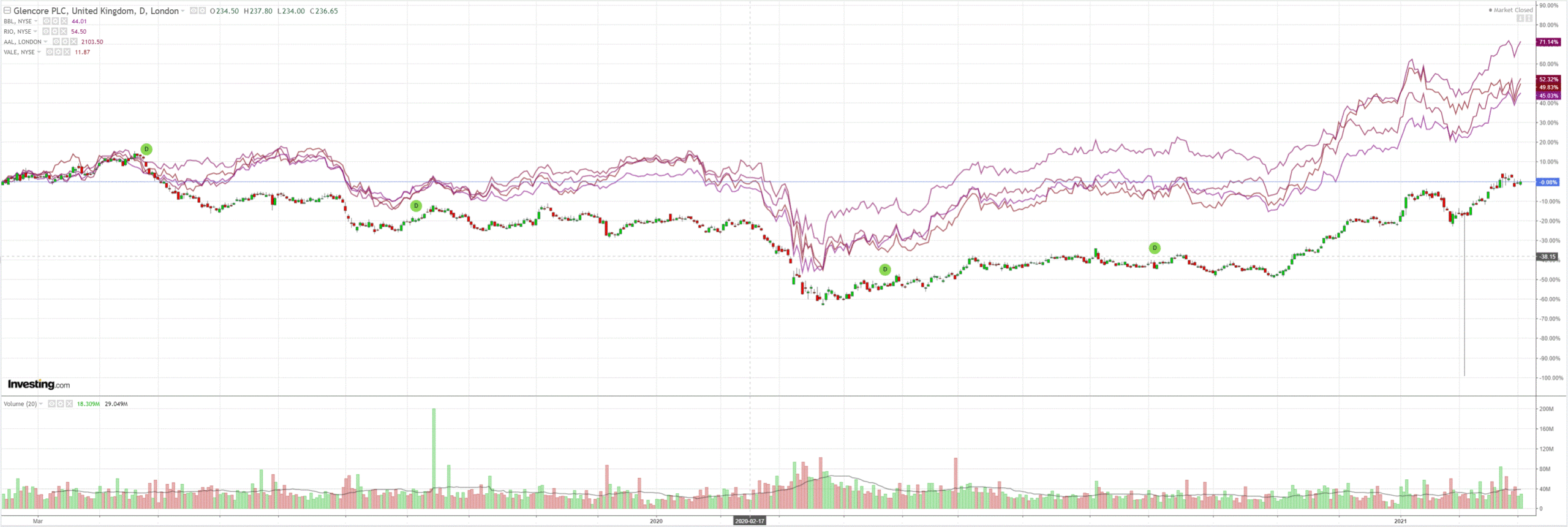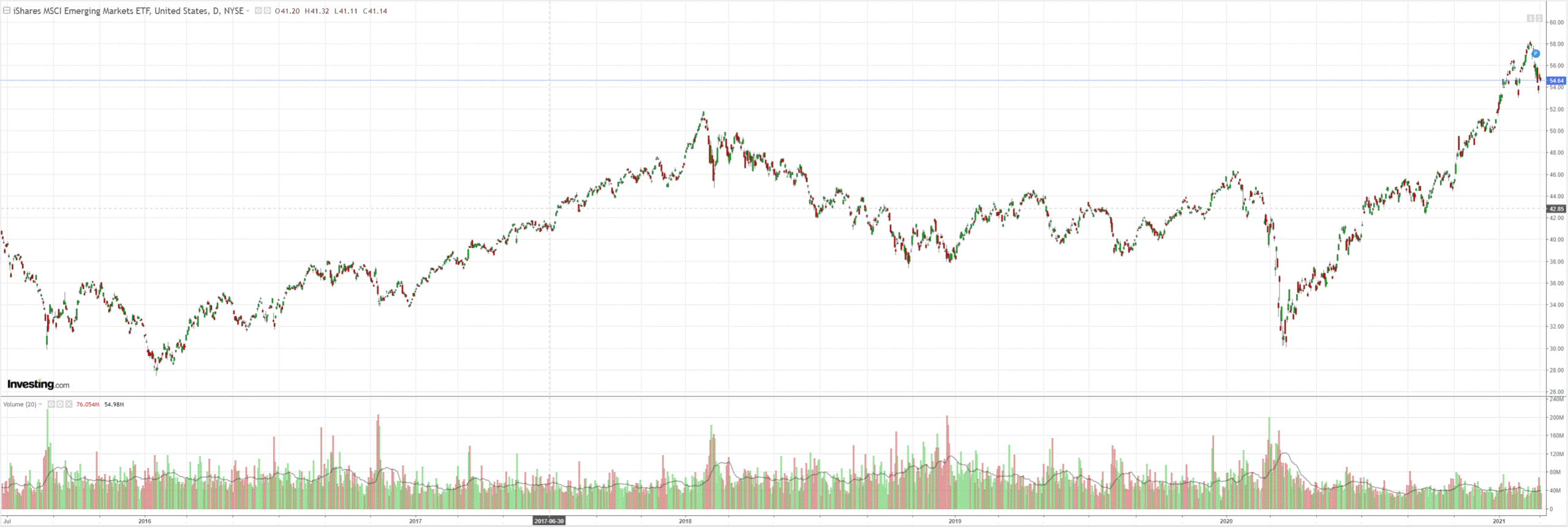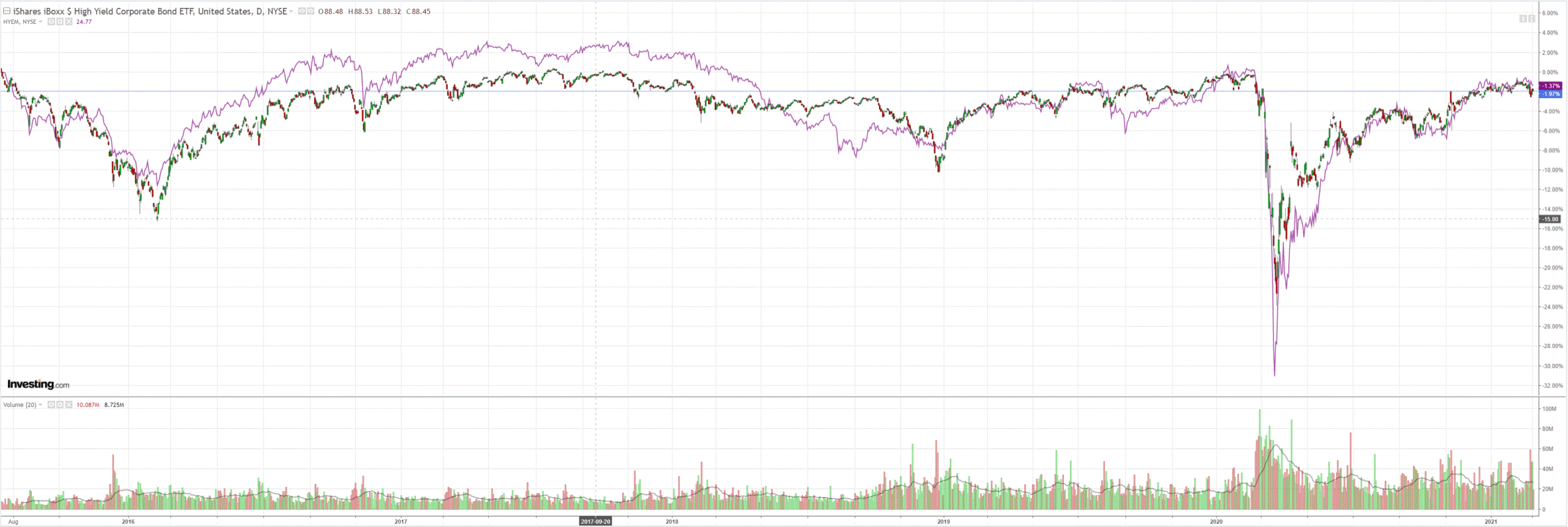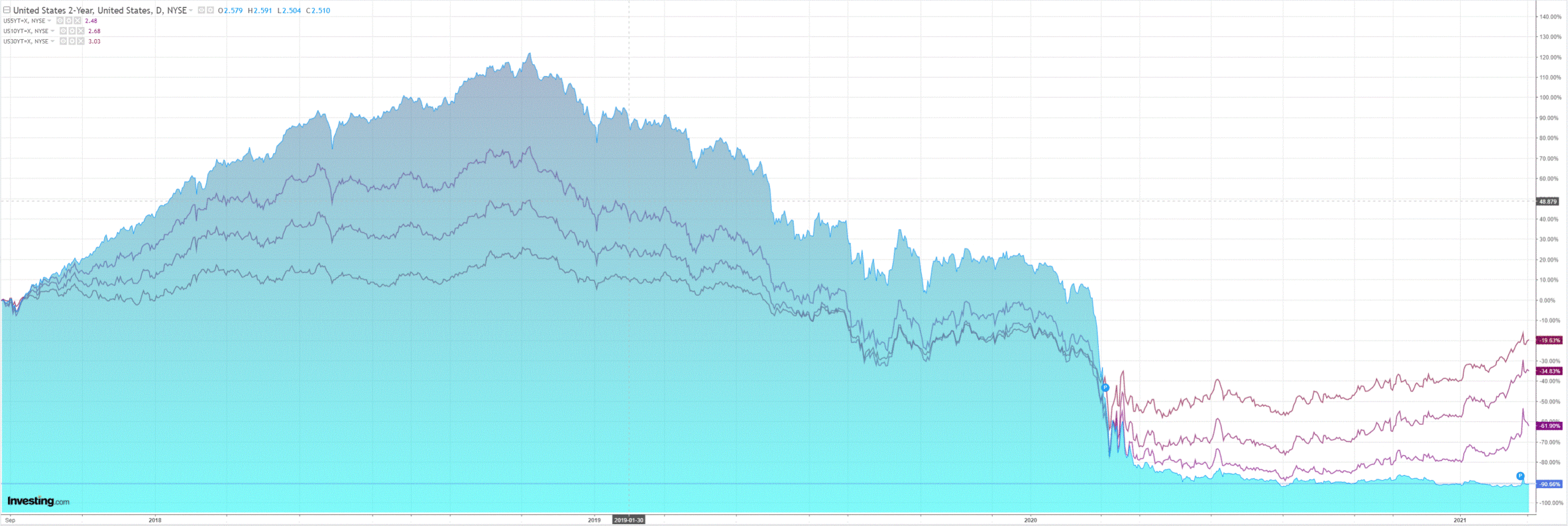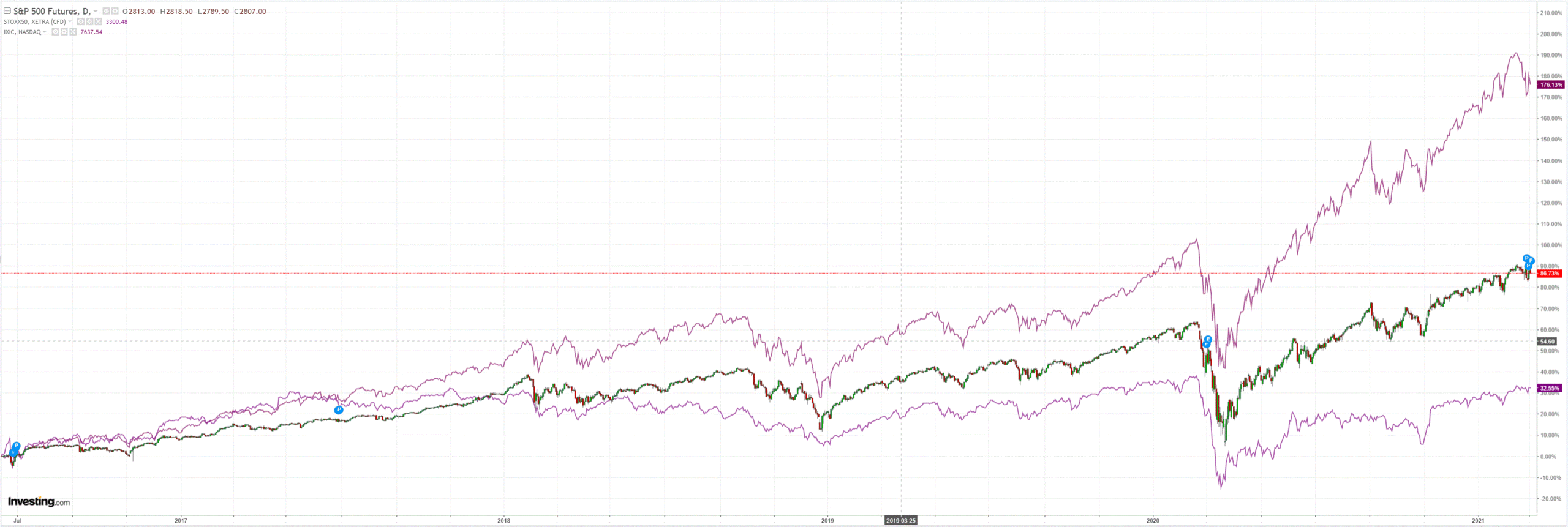For the past week or so, the global bond back-up has put equities to the sword. In particular, the tech bubble has quivered dangerously as rising yields turned growth stocks from TINA (there is no alternative) to a bubble fit to burst. Similar action transpired last night. DXY was down:
The Australian dollar jumped versus DMs:
And EMs:
Oil and gold remain deadly enemies:
Base metals lifted:
Big miners too:
EM stocks did OK:
Junk bonds are fine:
Despite more Treasury back-up:
Which did not impress stocks much, especially tech:
If the Nasdaq breaks down here it will have completed a near-perfect head and shoulders top. We shall see.
Wall Street is doing its best to put a brave face on its stuttering reflation trade. JPM is typical:
- The global economy will experience its strongest performance since the early 1980s, and the reflationary tilt will be sustained beyond this year.
- The compromised market microstructure and fragile liquidity were the key drivers of last week’s US Treasurysell-off, with the 5-and 7-year points on the curve most vulnerable.
- It’s too early in the growth, policy and inflation cycles to be defensive, and we are comfortable about core trades that are focused on the growth cycle.
- Position for a consumer-driven recovery fueled by pent-up demand and $1.7trn of additional stimulus, as well as the potential for another $300bn of infrastructure spending.
- US unemployment to decline to 4.5% by year-end and 3.6% by end-2022, with Fed tapering to begin in early 2022 but the first Fed hike is likely still an early 2024 event.
- The current market conditions are not reminiscent of those that prevailed during the 2013 Fed taper tantrum.
- We recommend taking risk across and within Equities hedged with Commodities and view the EM complex as most vulnerable to rising yields.
- Our equity strategists expect a decline in implied equity volatility, which has spiked and contrasts with low realized volatility.
- Financials are the highest conviction overweight within US equities, benefiting from reflation and low positioning.
- There will still be slack in the global recovery at the end of 2021 and the scarring will play out over 2022 and 2023.
My answers are as follows:
- Yep. That’s why yields will keep rising.
- Yep. But the liquidity event was driven by number one.
- Yep. But avoid tech and growth as yields rise.
- Sort of. Expect a swing from goods to services.
- Provided there is no new virus shock.
- Yes, they are. After the 2013 taper tantrum, the Fed didn’t hike for two years. That’s only a six-month difference with today and the rhetoric of the past two days has not been especially dovish as the curve steepens. Moreover, the US economy is in much better shape fundamentally than it was in 2013.
- Commodities are every bit as vulnerable to rising yields as the EM complex if the regime change includes a rising US dollar. So, far, it has.
- Volatility will remain high as tech busts.
- Yep. While the curve steepening lasts.
- Yep. And this will make US outperformance a real problem for the reflation as the US dollar rises.
In short, the picture is much complex now than Wall Street’s simple reflation narrative that blasted off the Australian dollar last night suggests. Where the AUD tops out for this cycle will hang on how fast the curve steepens and how fast China slows.
It’s probably too early but both are clearly coming into sight.

